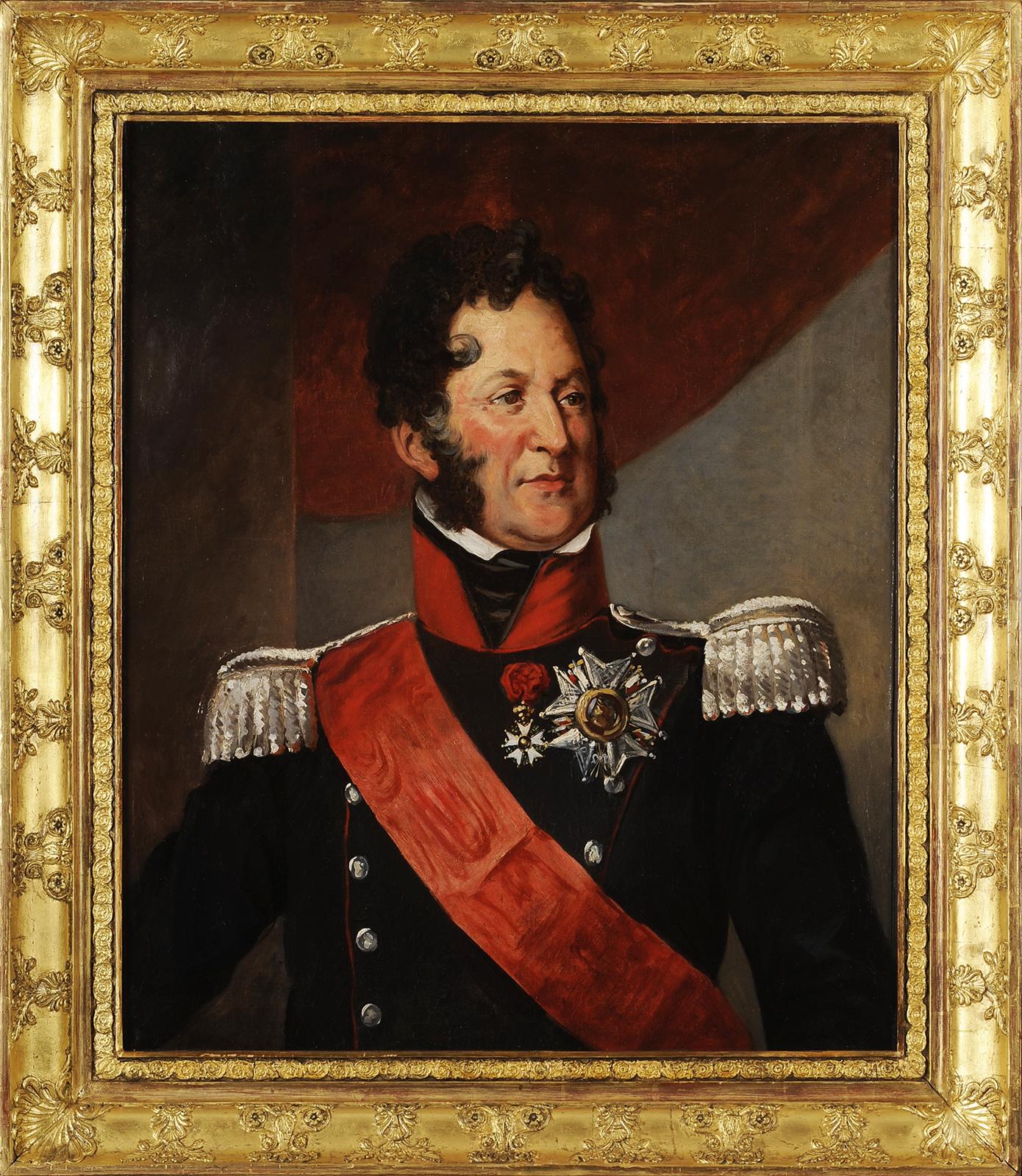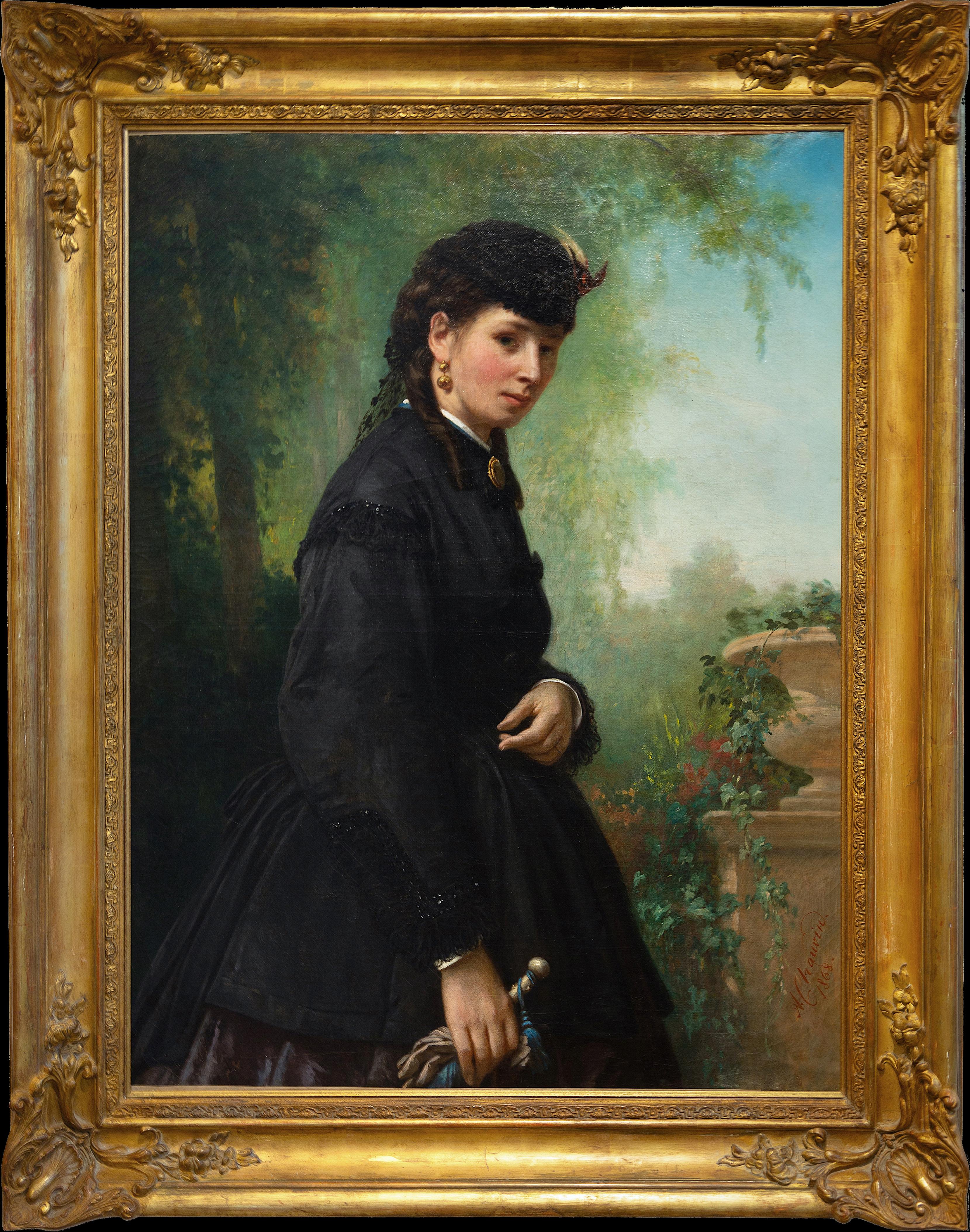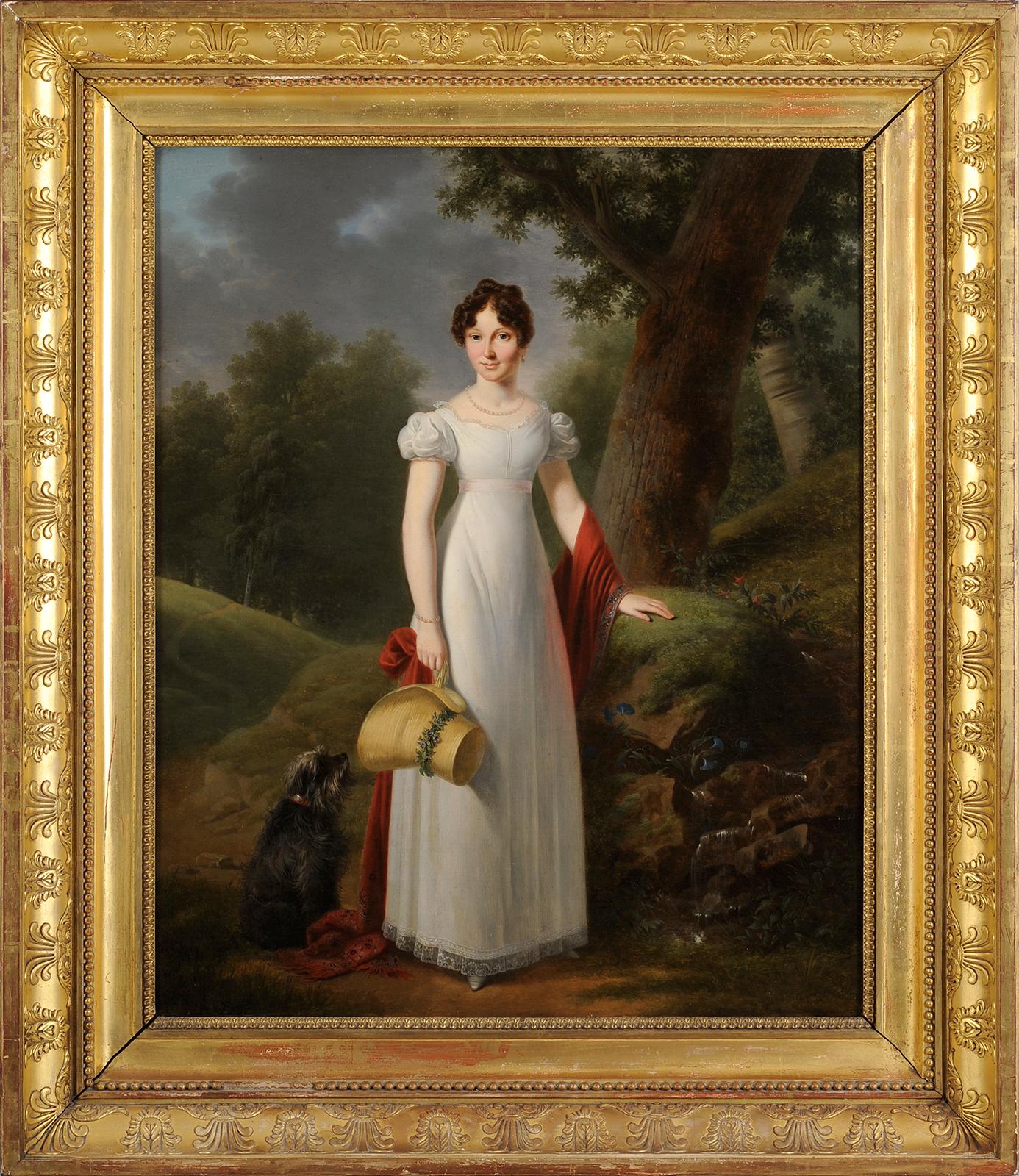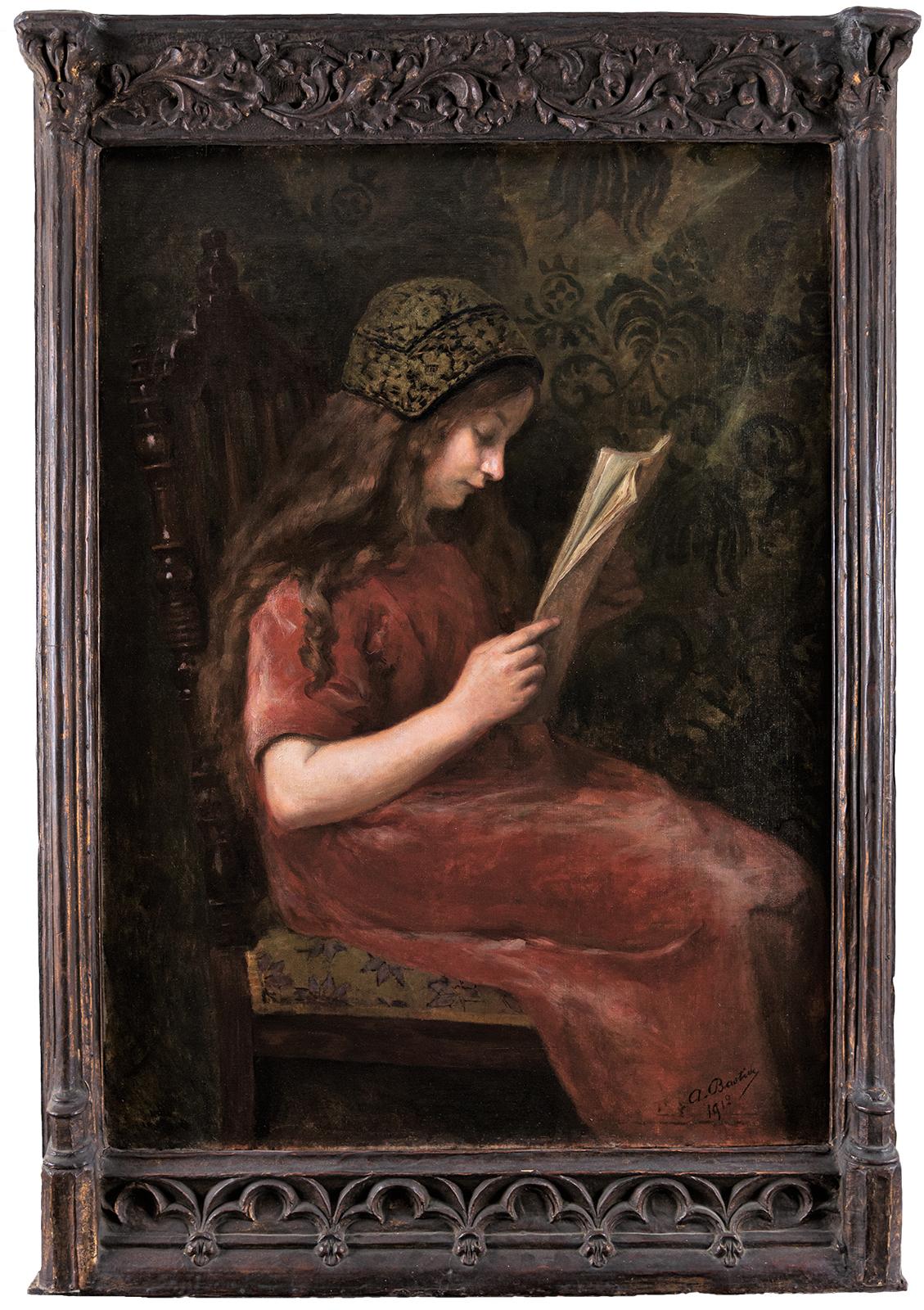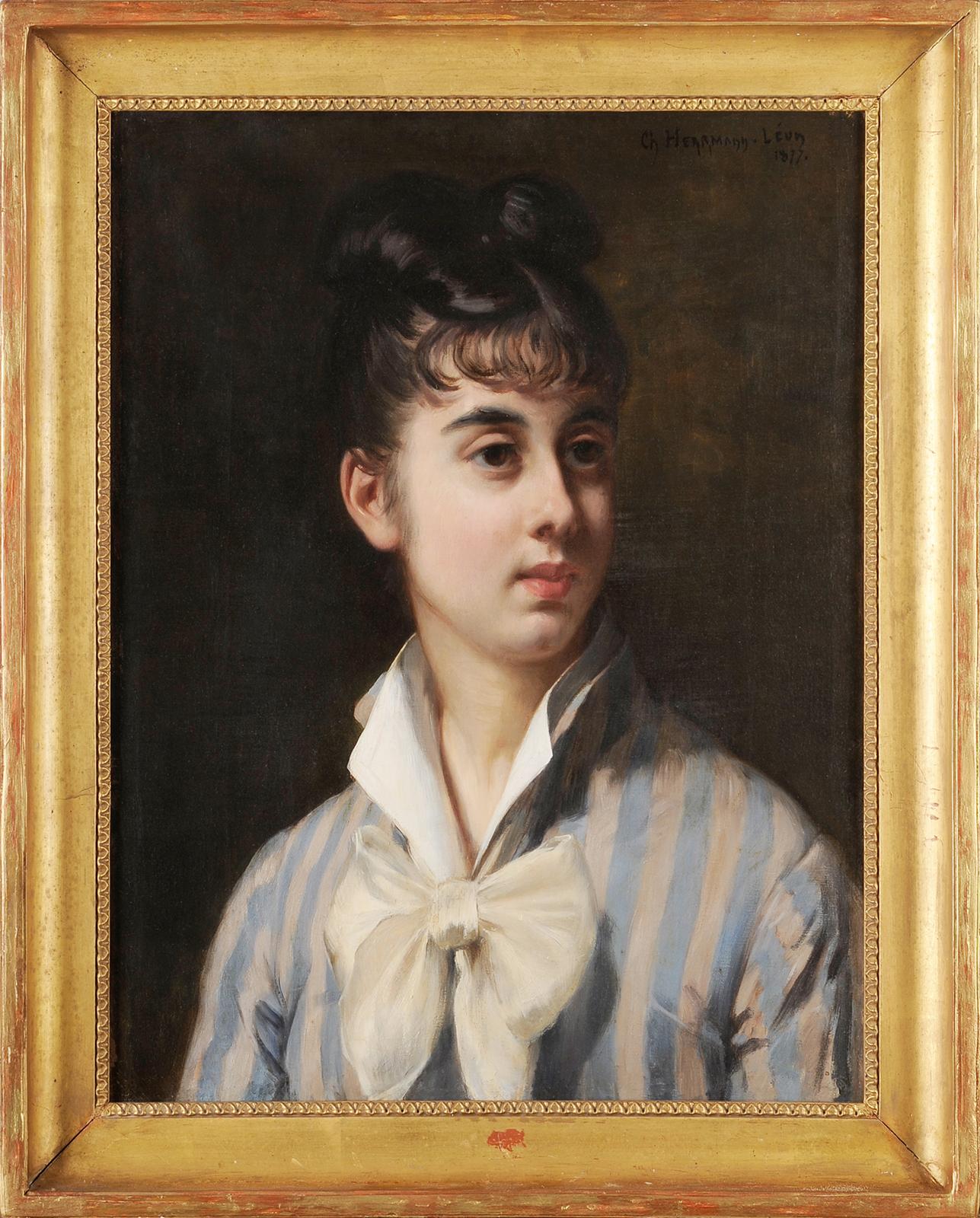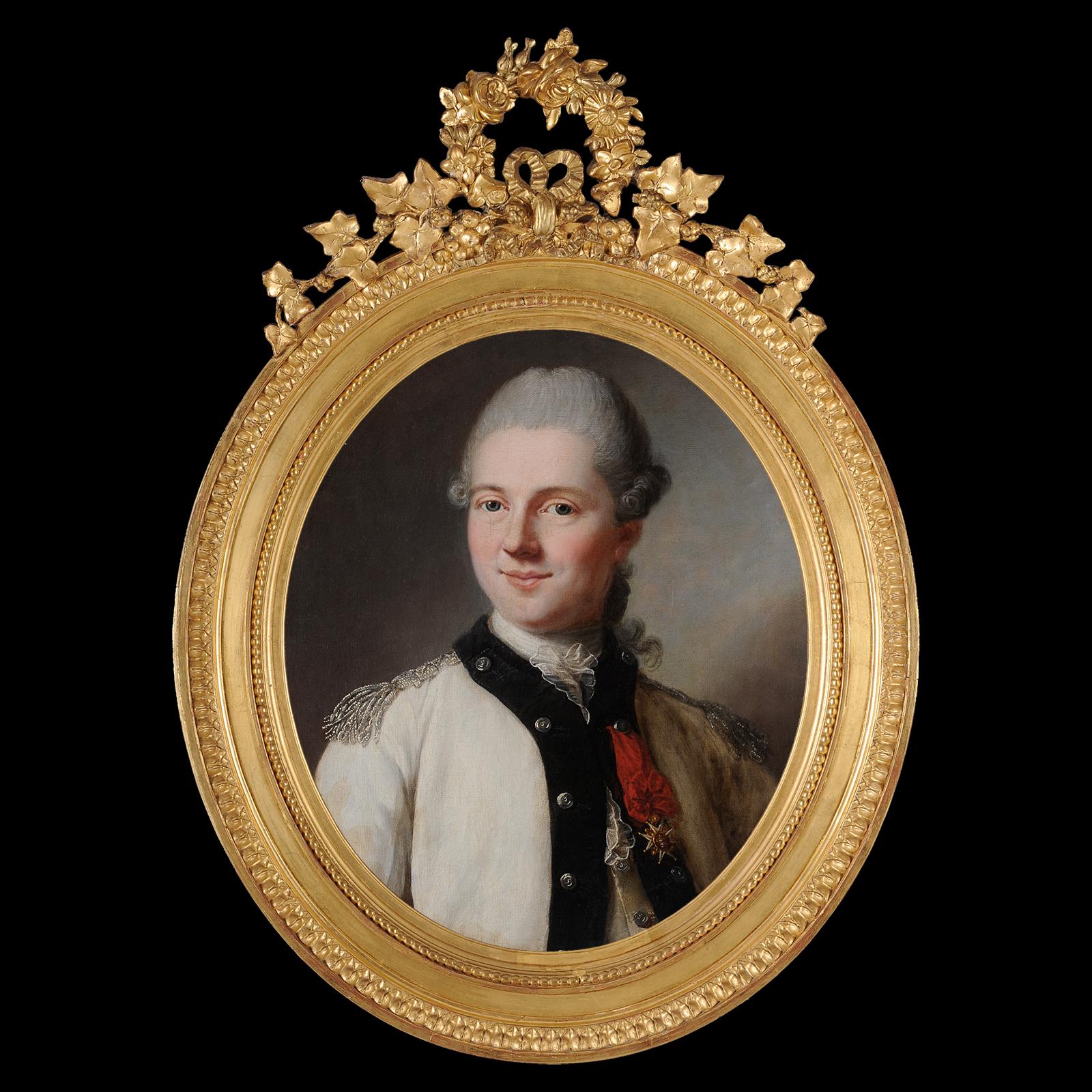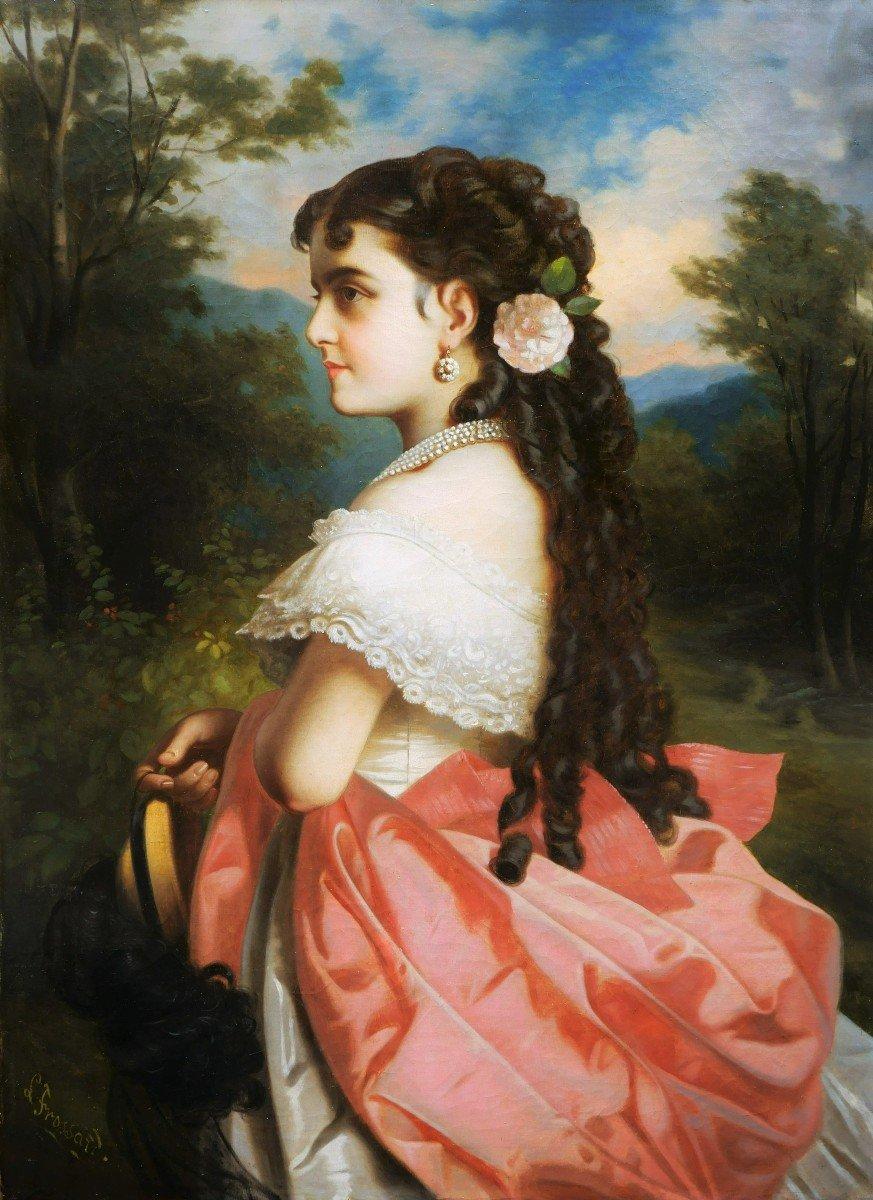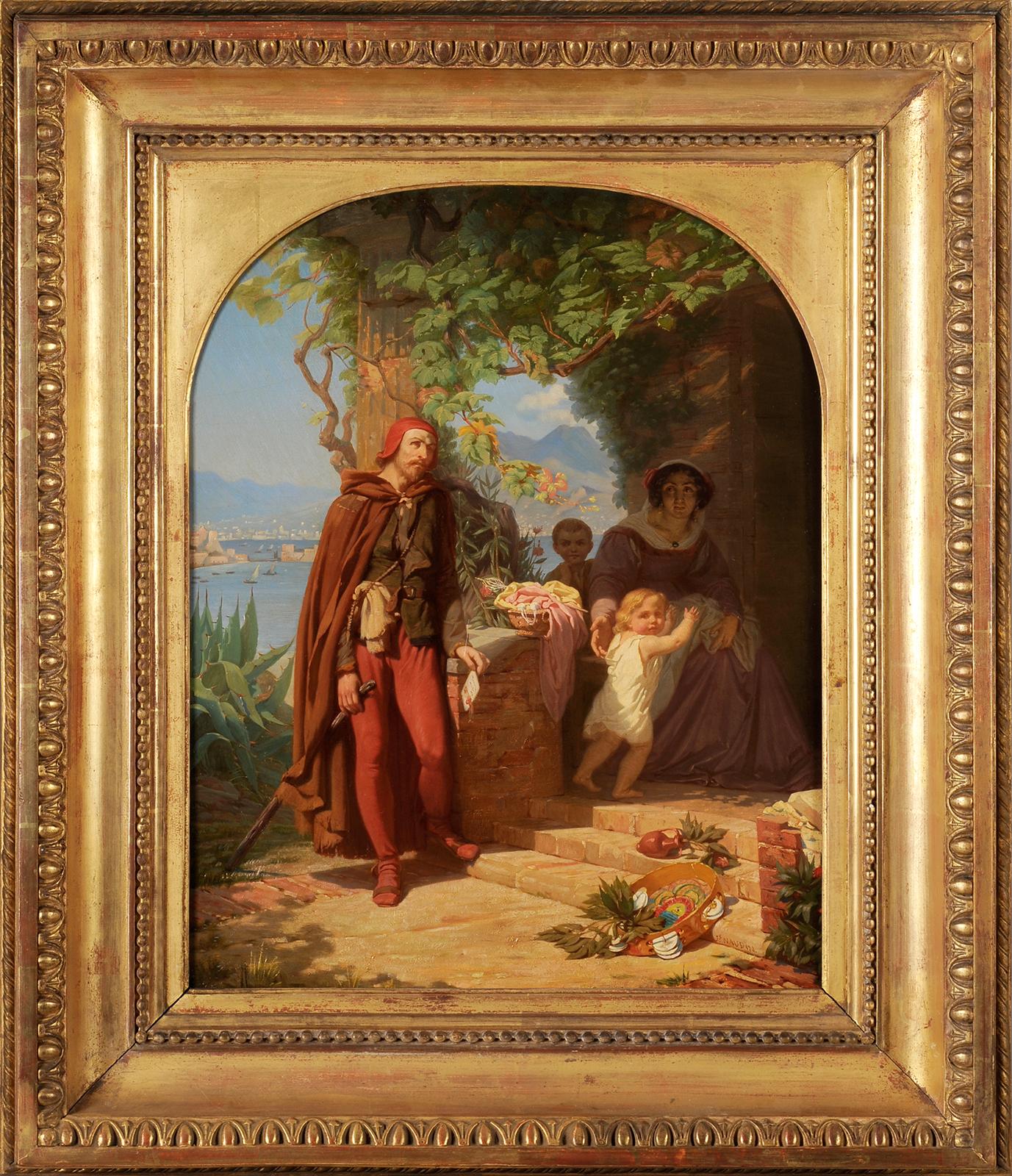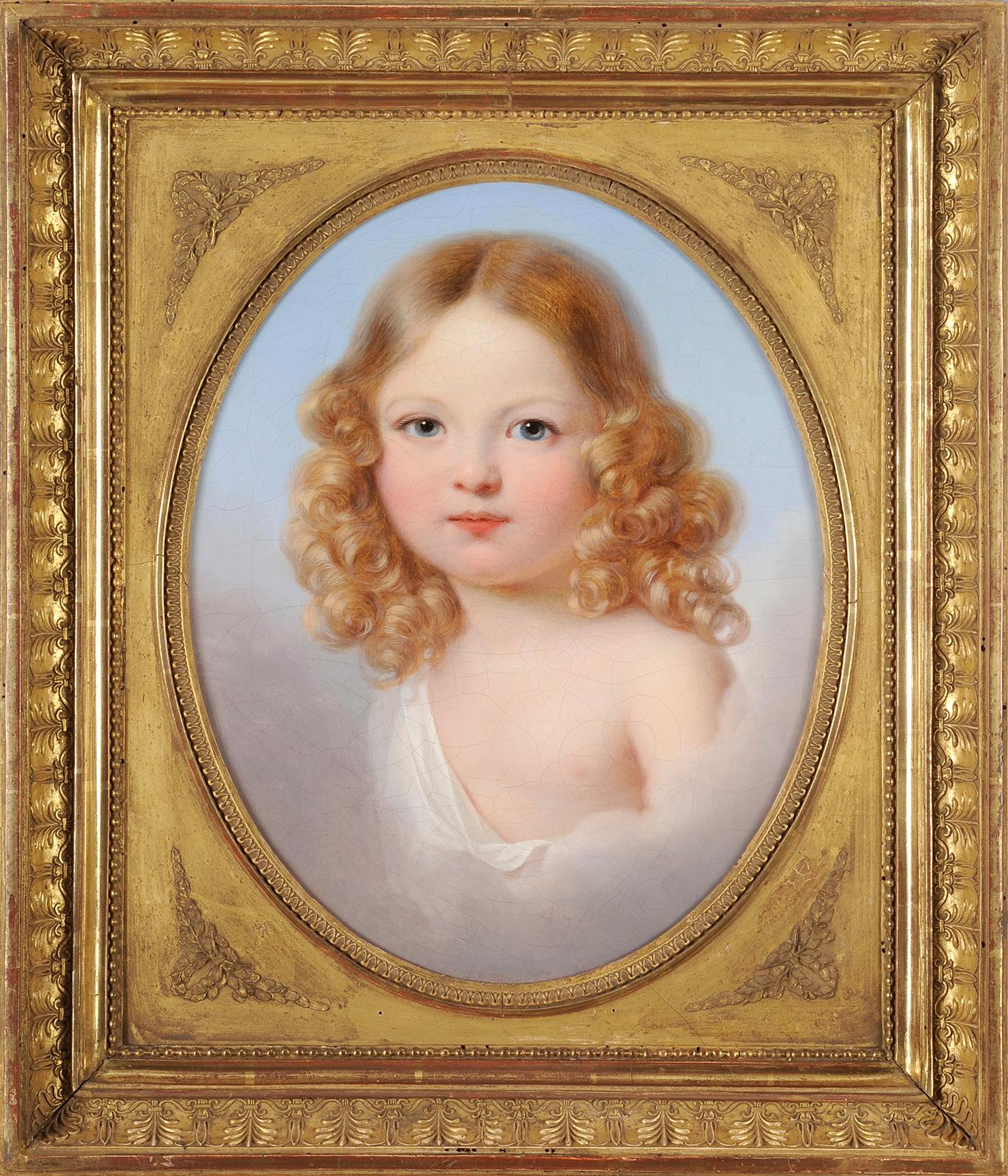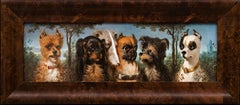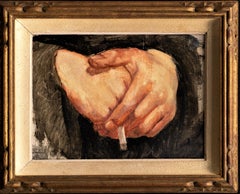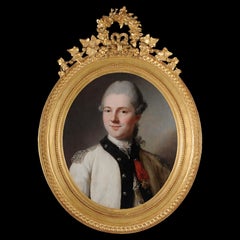
Orientalist Painting "The Man in the Turban" Raymond Allègre (France, 1857-1933)
View Similar Items
Video Loading
Want more images or videos?
Request additional images or videos from the seller
1 of 13
Raymond AllegreOrientalist Painting "The Man in the Turban" Raymond Allègre (France, 1857-1933)Circa 1890
Circa 1890
About the Item
- Creator:Raymond Allegre (1857 - 1933)
- Creation Year:Circa 1890
- Dimensions:Height: 23.5 in (59.69 cm)Width: 21.25 in (53.98 cm)Depth: 4 in (10.16 cm)
- Medium:
- Movement & Style:
- Period:
- Condition:The original frame, which itself is a work of art, shows some expected wear. The painting is in very good condition.
- Gallery Location:SANTA FE, NM
- Reference Number:1stDibs: LU140829957622
About the Seller
5.0
Platinum Seller
These expertly vetted sellers are 1stDibs' most experienced sellers and are rated highest by our customers.
Established in 1995
1stDibs seller since 2020
89 sales on 1stDibs
Typical response time: 1 hour
More From This SellerView All
- Antique Dog Portrait "A Fine Gourmet!" 1855 by Louis Godefroy Jadin (1805-1882)Located in SANTA FE, NMAntique Dog Portrait "A Fine Gourmet!" Louis Godefroy Jadin (1805-1882) Oil on wood panel Signed and dated "1855" 18 x 14 frame size inches Louis God...Category
1850s French School Animal Paintings
MaterialsWood, Oil
- Antique Portrait of 6 Dogs on Porcelain by Maison Pichenot-Loebnitz ca. 1870sLocated in SANTA FE, NMAntique and exceptionally rare and fine Portrait of 6 Dogs on Enameled Ceramic Maison Pichenot-Loebnitz France, ca. 1870. 25 x 8 (31 x 13 framed) inches This rectangular panel made of enameled ceramic was made by Jules Loebnitz in the second half of the 19th century depicts a suite of 6 very fine canines in a landscape setting. The Pichenot-Loebnitz factory was founded by Mr Pichenot, grandfather of Jules Loebnitz, in 1833. From 1841, Mr Pichenot created a new, innovative method of uncrackable earthenware panels for architectural mantels, winning a medal at the Exhibition of 1844. In 1857, Jules Loebnitz, an artist as much as an industrialist, became director of the factory. For his first major job, Loebnitz passionately collaborated with architect Félix Duban on the restoration of the Blois Castle, recreating the antique tiles of the mantelpieces. He then went to work with the most prominent architects of his times; Eugène Viollet-le-Duc, Laval, Charles Garnier, Just Lisch and Paul Sédille. A friendship was born in 1867 between Paul Sédille, the architect of the Printemps department stores and the Basilica of Bois-Chenu in Domrémy-la-Pucelle, and Jules Loebnitz that would lead to a tight, long-lasting professional, artistic, and intellectual collaboration. This was an important meeting between the theorist of polychrome architecture and the man who had pushed French ceramic art considerably forward, allowing for large, enameled earthenware plates decorated with very bright and long-lasting glass-like colors. Many architectural projects were born from the collaboration of Sédille and Loebnitz: World’s fair pavilions, apartment buildings, villas, hotels, and monuments. During the Great Exhibition of 1878, Paul Sédille created the door of the Palais des Beaux-arts, while Jules Loebnitz was in charge of the ceramic decoration of the facade. A reporter covering the 1878 World’s fair described the monumental door...Category
1870s French School Animal Paintings
MaterialsEnamel
- Study of a Hands with a Cigarette- French, early 20th centuryLocated in SANTA FE, NMStudy of Hands with Cigarette French, early 20th century Oil on canvas on wood panel Unsigned 6 1/2 x 9 (10 1/8 x 12 3/8 inches) A very interesting and competently executed study ...Category
Early 20th Century Realist Figurative Paintings
MaterialsCanvas, Oil, Wood Panel
$2,760 Sale Price20% Off - Portrait of a Monkey with Wine Jug, Zacharias Noterman (Bel. Fr. 1824-1890)By Zacharias NotermanLocated in SANTA FE, NMPortrait of a Monkey with Wine Jug Zacharias Noterman (Belgium & France 1824-1890) Initialed "Z N" l.r. Oil on board 8 x 6 inches PROVENANCE: Galerie Tamenaga, Paris (label verso); Louvre des Antiquaires, Paris; Berman Swarttz, Los Angeles, California, Marcella Swarttz, Beverly Hills, California 8 x 6 inches Zacharias Notermann (1820 in Ghent – 1890 in Paris) was a Belgian painter and printmaker who specialized in scenes with monkeys engaging in human activities (the so-called singeries), as well as in paintings of dogs. He also produced images and scenes of traveling circuses. Zacharias Noterman was born in Ghent in the family as the son of an artist-decorator. He was originally trained by his older brother Emmanuel Noterman, genre and animal painter active in Antwerp. Noterman continued his art education at the Academy of fine arts Antwerp. Zacharie Noterman...Category
Mid-19th Century Realist Animal Paintings
MaterialsCanvas, Oil, Board
$7,920 Sale Price20% Off - Antique Horse Portrait- "Sysonby, " Edward Herbert Miner. ex Sotheby's 2004By Edward Herbert MinerLocated in SANTA FE, NMAntique Horse Painting "Sysonby"-Equestrian Painting Edward Herbert Miner (American, 1882-1941) Depicting the champion thoroughbred horse Sysonby (1902-1906) Oil on canvas, signed "E H Miner 1905" 24 x 32 inches Ex. Collection of Mr. & Mrs. Walter M Jeffords, a prominent Philadelphia lawyer and racehorse owner, at Sotheby's NY, 2004. Sysonby (1902–1906) was an American Thoroughbred racehorse. He won every start easily, except one, at distances from one mile to two and a quarter miles. His superiority as a two and three-year-old was unchallenged during his short career of 15 race starts. Sysonby was regarded by many experts as the best horse to have raced in the United States between the Civil War and World War I. His sole loss in 15 starts came after he was doped by his groom as a bribe; even then, it took another member of the Hall of Fame, Artful, to beat him Foaled in Kentucky, Sysonby was a bay son of the 1885 Epsom Derby winner, Melton, out of the English mare Optime by Orme (by the undefeated Ormonde). The mating of Melton and Optime was arranged by Marcus Daly, who was involved with the Anaconda Copper Mine. Daly died before Optime, stabled in England, foaled. His stock, including the still pregnant Optime, was brought to New York to be auctioned. James R. Keene purchased Optime for $6,600, sending her to his Castleton Stud in Kentucky, which he rarely visited. Apparently Optime's foal, observed in his paddock, was anything but inspiring. Considered unattractive and small, as well as slow, young Sysonby was to be sent back to England for sale. But Keene's trainer, the well-regarded James G. Rowe, Sr., had seen Sysonby in action during some early trials. When it was time for the yearlings to be sent away, Rowe, a leading trainer who had once been a leading jockey (guiding Harry Bassett to his Saratoga Cup win amongst many other successes), covered Sysonby in blankets, convincing Keene he was too ill to make the long ocean journey. In the care of Rowe, Sysonby won everything Rowe entered him in by sizable margins, with the exception of the Futurity Stakes (USA), where he came in an unaccountable third, beaten by the filly Tradition and the filly Artful. Artful ranked 94th in the top 100 U.S. Thoroughbred champions of the 20th century by Blood-Horse magazine). Rowe saw Sysonby's groom exhibiting a large sum of money, and the groom admitted he'd been bribed to drug Sysonby before the race. If not drugged, nothing beat Sysonby. The turf writer Neil Newman ranked Sysonby as one of the three best colts he'd ever seen. The other two were Colin (also trained by Rowe) and Man o' War. Sysonby was the top money earner of 1905. Average winning margin was 4 ¼ lengths. Was ahead at every point of every race, except at the quarter call in the Brighton Junior Stakes, and in the stretch of the Futurity. Sysonby was inducted into the National Museum of Racing and Hall of Fame in Saratoga Springs, New York, in 1956. In the list of the top 100 U.S. Thoroughbred champions of the 20th Century by Blood-Horse magazine, he ranks 30th. Eighteen years after Sysonby's death, a December 11, 1924 Daily Racing Form article looking back on his racing career, called Sysonby "One of Greatest Race Horses in History of the American Turf". James Rowe, Sr. was also inducted posthumously into the Hall of Fame as a trainer. Provenance: Walter Morrison Jeffords Sr. (August 8, 1883 – September 28, 1960) was a successful Investment banker and owner/breeder of Thoroughbred racehorses who, in partnership with his wife's uncle, Samuel Riddle, purchased and operated Faraway Farm near Lexington Kentucky where they stood Man o' War. Jeffords is one of only five people to be named an Exemplar of Racing by the National Museum of Racing and Hall of Fame. His former estate is now Ridley Creek...Category
Early 1900s American Realist Animal Paintings
MaterialsCanvas, Oil
- Antique Dog Portrait "Cavalier King Charles on a Cushion" Hubert Henrard ca 1860Located in SANTA FE, NMAntique Dog Portrait: "Cavalier King Charles on a Cushion" Hubert Henrard (Belgium, 1816-1898) Oil on canvas Signed lower left, circa 1860 15 1/4 x 11 1/4 (19 1/2 x 15 1/2 frame) inches Ex. collection: Burn Hall Manor, Durham England...Category
Mid-19th Century Dutch School Animal Paintings
MaterialsCanvas, Oil
You May Also Like
- Woman with Lobsters / "Femme et Homards"By Andre MinauxLocated in Berlin, MDAndre Minaux (French 1923 - 1986) "Femme et Homards" / Woman with Lobsters. Oil on canvas. Features a young woman holding one lobster while two others sit on a counter before her. ...Category
Mid-20th Century French School Portrait Paintings
MaterialsCotton Canvas, Oil
- Young woman portrait with a white bowLocated in BELEYMAS, FRCharles HERMANN-LÉON (born Léon Charles Sigismond HEMRMANN) (Le Havre 1838 - Paris 1908) Portrait of a young woman Oil on canvas H. 54 cm; L. 41 cm Signed and dated upper right - 187...Category
1870s French School Figurative Paintings
MaterialsOil, Canvas
- Presumed portrait of Baron de VennacLocated in BELEYMAS, FRMarianne LOIR (Paris 1705 – Paris 1783) Presumed portrait of Jean-Jacques-Blaise Baloin de Belvèse, Baron de Vennac (?-1781) Oil on oval canvas H. 54.5 cm; W. 46 cm (around 90 cm hig...Category
1770s French School Figurative Paintings
MaterialsOil, Canvas
- Portrait of singer Adelina Patti - L. Frossard - OperaLocated in BELEYMAS, FRL. FROSSARD (active in Vienna around 1870) Portrait of Adelina Patti (1843-1919) Oil on canvas H. 100.5 cm; L. 73.5 c Signed lower left If the artist maintains a certain discretion ...Category
1860s French School Figurative Paintings
MaterialsCanvas, Oil
- Jules Naudin (1817-c.1876) - Tasso arriving at his sister's house in SorrentoBy Attilio ManganaroLocated in BELEYMAS, FRJules Ambroise Francois NAUDIN (Paris 1817 – c.1876) Tasso arriving at his sister's house in Sorrento Oil on canvas H. 49 cm; L. 37.5 cm Signed lower right Exhibition: 1852, Paris Salon, under number 959 Related work: Engraving by Jean-Denis Nargeot in 1852 Bibliography: L’Illustration, April 24, 1852, engraved by Best, Hottelin and Regnier, after a drawing by Valentin) and reproduced p.260, cited p.262; La Mode: Political, Religious and Literary Review, 1852, quoted; Journal des Demoiselles...Category
1850s French School Figurative Paintings
MaterialsCanvas, Oil
- Child portrait in cloudsLocated in BELEYMAS, FRFrench school circa 1800 Portrait of a child in the clouds H. 40 cm; L. 32 cm This luminous portrait is that of a child of three or four years old, represented in the clouds. The ve...Category
Early 1800s French School Figurative Paintings
MaterialsOil, Canvas
Recently Viewed
View AllMore Ways To Browse
Circa 1890 Paintings
10 X 7 Painting
10x13 Painting
French Normandy Paintings
French Oil Painting 1890
Buy Antique Art
French Orientalist
Portrait 1903
Orientalist Paintings
Orientalist Painting
Circa 1857
Orientalist Oil
Aix Painting
Aix En Provence Painting
Embellished Trainers
French Painting Monaco
19th Orientalist Paintings
19th Century Orientalist Paintings

